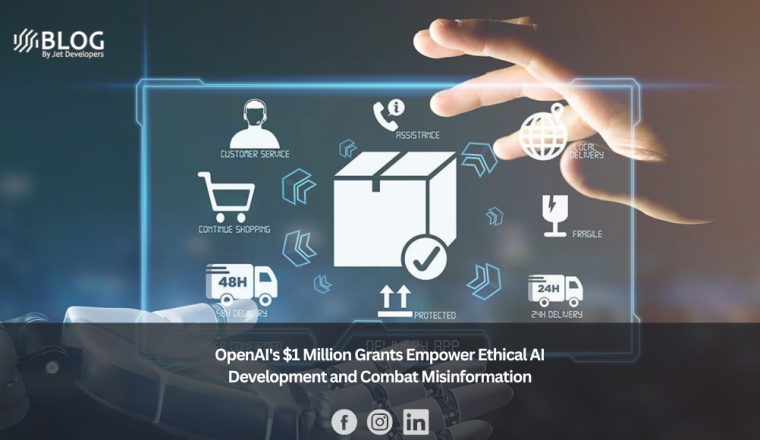In recent years, the gaming industry has witnessed a remarkable transformation, largely driven by the emergence of artificial intelligence (AI) technology. The influence of AI in game development, however, has been present since its early days. Initially focused on creating unbeatable game-playing programs, AI has now expanded its reach to revolutionize various aspects of game design and development.
Game developers today harness the power of AI to enhance multiple facets of their creations. One prominent area where AI excels is in improving photorealistic effects, leading to visually stunning and immersive game environments. By analyzing vast amounts of data and employing sophisticated algorithms, AI enables developers to create virtual worlds that rival reality itself.
Another groundbreaking application of AI in game development lies in the generation of game content. AI algorithms can autonomously produce diverse and engaging game levels, characters, and narratives. This capability not only saves time and resources for developers but also ensures that players are constantly presented with fresh and exciting experiences.
AI also plays a crucial role in balancing in-game complexities. By monitoring player behavior and analyzing gameplay patterns, AI algorithms can dynamically adjust difficulty levels, ensuring an optimal and challenging experience for players of all skill levels. This adaptability keeps gamers engaged and prevents them from becoming bored or frustrated.
Moreover, AI provides the much-needed “intelligence” to Non-Playing Characters (NPCs). These AI-controlled entities can now exhibit advanced decision-making capabilities, adapting their behavior to the player’s actions and creating more realistic and immersive gameplay interactions. Whether it’s realistic enemy AI in a first-person shooter or intelligent companions in a role-playing game, AI-driven NPCs contribute to a more dynamic and engaging gaming experience.
Looking ahead, the future of gaming intelligence holds even more exciting possibilities. AI can be employed to analyze player behavior and preferences on a deeper level, allowing game developers to personalize gameplay experiences and deliver targeted content. This level of customization ensures that each player feels uniquely immersed in the game world, fostering a strong sense of connection and enjoyment.
AI-Powered Game Engines
Game engines are software frameworks that game developers use to create and develop video games. They provide tools, libraries, and frameworks that allow developers to build games faster and more efficiently across multiple platforms, such as PC, consoles, and mobile devices.
AI is revolutionizing game engines by allowing for the creation of more immersive and dynamic environments. Rather than manually coding a game engine’s various components, such as the physics engine and graphics rendering engine, developers can use neural networks to train the engine to create these components automatically. This can save time and resources while creating more realistic and complex game worlds.
Additionally, AI-powered game engines use machine learning algorithms to simulate complex behaviors and interactions and generate game content, such as levels, missions, and characters, using Procedural Content Generation (PCG) algorithms.
Other use cases of AI in game engines include optimizing game performance and balancing game difficulty making the game more engaging and challenging for players.
One example of an AI-powered game engine is GameGAN, which uses a combination of neural networks, including LSTM, Neural Turing Machine, and GANs, to generate game environments. GameGAN can learn the difference between static and dynamic elements of a game, such as walls and moving characters, and create game environments that are both visually and physically realistic.
AI-driven Game Design
Game design involves creating the rules, mechanics, and systems defining the gameplay experience. AI can play a crucial role in game design by providing designers with tools to create personalized and dynamic experiences for players.
One way AI can be used in game design is through procedural generation. Procedural generation uses algorithms to automatically create content, such as levels, maps, and items. This allows for a virtually infinite amount of content to be made, providing players with a unique experience each time they play the game. AI-powered procedural generation can also consider player preferences and behavior, adjusting the generated content to provide a more personalized experience.
Another way AI can be used in game design is through player modeling. By collecting data on how players interact with the game, designers can create player models that predict player behavior and preferences. This can inform the design of game mechanics, levels, and challenges to better fit the player’s needs.
AI can also be used to create more intelligent and responsive Non-Player Characters (NPCs) in games.
Using natural language processing (NLP) and machine learning techniques, NPCs can interact with players in more realistic and engaging ways, adapting to their behavior and providing a more immersive experience.
Furthermore, AI can analyze player behavior and provide game designers with feedback, helping them identify areas of the game that may need improvement or adjustment. This can also inform the design of future games, as designers can use the insights gained from player behavior to inform the design of new mechanics and systems.
AI and Game Characters
Artificial Intelligence is critical in developing game characters – the interactive entities players engage with during gameplay.
In the past, game characters were often pre-programmed to perform specific actions in response to player inputs. However, with the advent of AI, game characters can now exhibit more complex behaviors and respond to player inputs in more dynamic ways.
One of the most significant advances in AI-driven game character development is using machine learning algorithms to train characters to learn from player behavior.
Machine learning algorithms allow game developers to create characters that adapt to player actions and learn from their mistakes. This leads to more immersive gameplay experiences and can help make a greater sense of connection between players and game characters.
Another way that AI is transforming game characters is through the use of natural language processing (NLP) and speech recognition. These technologies allow game characters to understand and respond to player voice commands. For example, in Mass Effect 3, players can use voice commands to direct their team members during combat.
AI is also used to create more realistic and engaging game character animations. By analyzing motion capture data, AI algorithms can produce more fluid and natural character movements, enhancing the overall visual experience for players.
AI and Game Environments
AI can also generate specific game environments, such as landscapes, terrain, buildings, and other structures. By training deep neural networks on large datasets of real-world images, game developers can create highly realistic and diverse game environments that are visually appealing and engaging for players.
One method for generating game environments is using generative adversarial networks (GANs). GANs consist of two neural networks – a generator and a discriminator – that work together to create new images that resemble real-world images.
The generator network creates new images, while the discriminator network evaluates the realism of these images and provides feedback to the generator to improve its output.
Another method for generating game environments is through the use of procedural generation. Procedural generation involves creating game environments through mathematical algorithms and computer programs. This approach can create highly complex and diverse game environments that are unique each time the game is played.
AI can also adjust game environments based on player actions and preferences dynamically. For example, in a racing game, the AI could adjust the difficulty of the race track based on the player’s performance, or in a strategy game, the AI could change the difficulty of the game based on the player’s skill level.
AI and Game Narrative
AI can also be used to enhance the narrative in video games. Traditionally, human writers have developed game narratives, but AI can assist with generating narrative content or improving the overall storytelling experience.
Natural language processing (NLP) techniques can be used to analyze the player feedback and adjust the narrative in response. For example, AI could analyze player dialogue choices in a game with branching dialogue options and change the story accordingly.
Another use of AI in game narratives is to generate new content. This can include generating unique character backstories, creating new dialogue options, or even generating new storylines.
AI and Game Testing
Game testing, another critical aspect of game development, can be enhanced by AI. Traditional game testing involves hiring testers to play the game and identify bugs, glitches, and other issues. However, this process can be time-consuming and expensive, and human testers may not always catch all the problems.
The other alternative is the use of scripted bots. Scripted bots are fast and scalable, but they lack the complexity and adaptability of human testers, making them unsuitable for testing large and intricate games.
AI-powered testing can address these limitations by automating many aspects of game testing, reducing the need for human testers, and speeding up the process.
Reinforcement Learning (RL) is a branch of machine learning that enables an AI agent to learn from experience and make decisions that maximize rewards in a given environment.
In a game-testing context, the AI can take random actions and receive rewards or punishments based on the outcomes, such as earning points. Over time, it can develop an action policy that yields the best results and effectively test the game’s mechanics.
Machine learning algorithms can also identify bugs and glitches in the game. The algorithm can analyze the game’s code and data to identify patterns that indicate a problem, such as unexpected crashes or abnormal behavior. This can help developers catch issues earlier in the development process and reduce the time and cost of fixing them.
The Future of AI in Game Development
The gaming industry has always been at the forefront of technological advancements, and artificial Intelligence (AI) is no exception.
In recent years, AI has played an increasingly important role in game development, from improving game mechanics to enhancing game narratives and creating more immersive gaming experiences.
As AI technology continues to evolve, the possibilities for its application in game development are expanding rapidly.
Here are some potential areas that AI is expected to shape the future of the gaming industry:
Automated Game Design:
One of the most exciting prospects of AI in game development is automated game design.
By training AI models on large datasets of existing games, it could be possible to create new games automatically without human intervention. AI algorithms could generate game mechanics, levels, characters, and more, potentially significantly reducing development time and costs.
However, this technology is still in its infancy, and whether AI-generated games can replicate the creativity and originality of human-designed games remains to be seen.
Data Annotation:
Data annotation is the process of labeling data to train AI models. In the gaming industry, data annotation can improve the accuracy of AI algorithms for tasks such as object recognition, natural language processing, and player behavior analysis. This technology can help game developers better understand their players and improve gaming experiences.
Audio or Video Recognition based Games:
Another exciting prospect for AI in game development is audio or video-recognition-based games. These games use AI algorithms to analyze audio or video input from players, allowing them to interact with the game using their voice, body movements, or facial expressions.
This technology can potentially create entirely new game experiences, such as games that respond to players’ emotions or games that are accessible to players with disabilities.
Conclusion
AI has already significantly impacted the gaming industry and is poised to revolutionize game development in the coming years.
With the help of AI, game developers can create more engaging and immersive games while reducing development time and costs. AI-powered game engines, game design, characters, environments, and narratives are already enhancing the gaming experience for players.
Decision trees, reinforcement learning, and GANs are transforming how games are developed. The future of AI in gaming is promising with the advent of automated game design, data annotation, and hand and audio or video recognition-based games.
As AI technology advances, we can expect game development to become even more intelligent, intuitive, and personalized to each player’s preferences and abilities.





